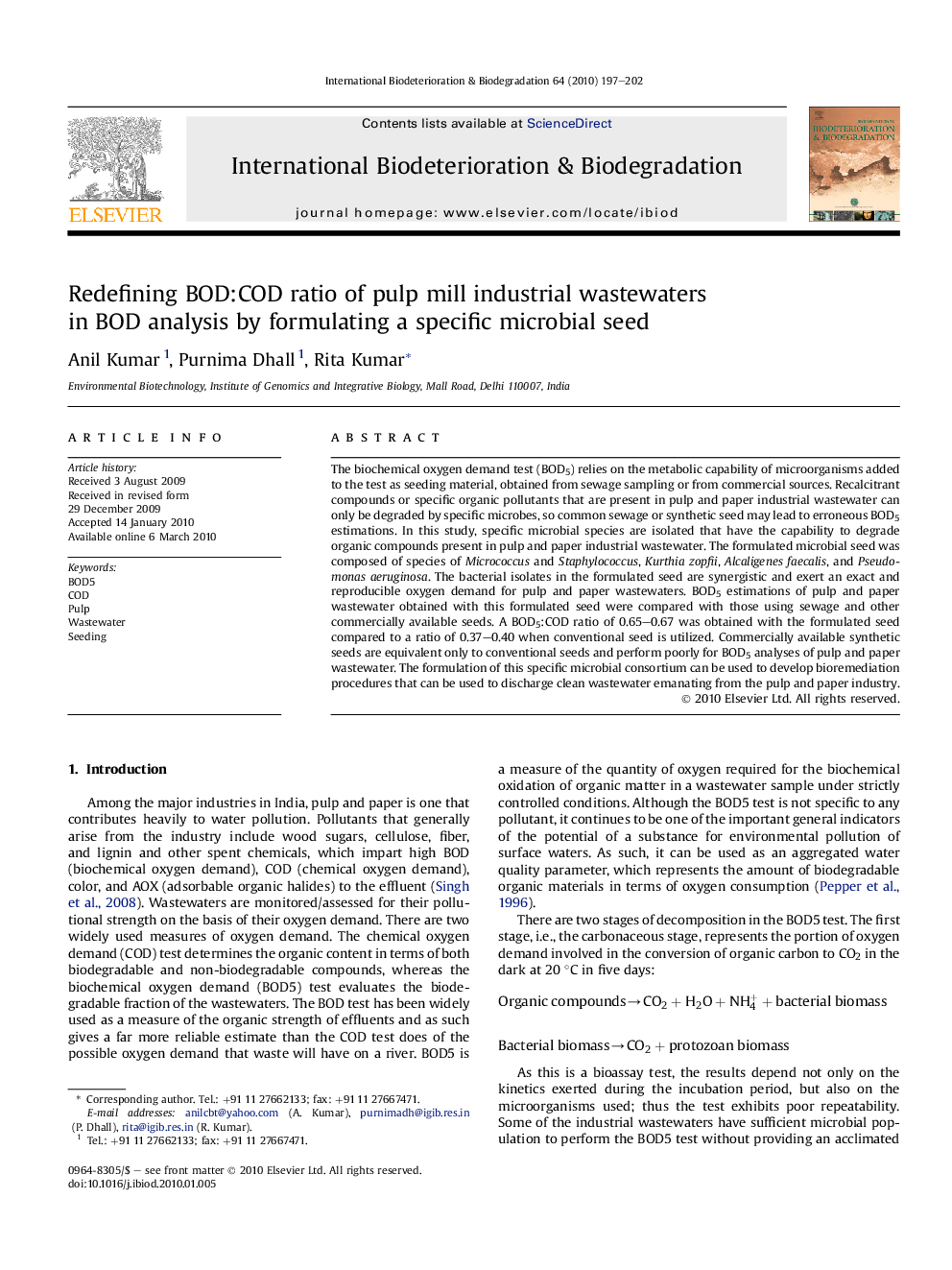| کد مقاله | کد نشریه | سال انتشار | مقاله انگلیسی | نسخه تمام متن |
|---|---|---|---|---|
| 4365372 | 1301756 | 2010 | 6 صفحه PDF | دانلود رایگان |

The biochemical oxygen demand test (BOD5) relies on the metabolic capability of microorganisms added to the test as seeding material, obtained from sewage sampling or from commercial sources. Recalcitrant compounds or specific organic pollutants that are present in pulp and paper industrial wastewater can only be degraded by specific microbes, so common sewage or synthetic seed may lead to erroneous BOD5 estimations. In this study, specific microbial species are isolated that have the capability to degrade organic compounds present in pulp and paper industrial wastewater. The formulated microbial seed was composed of species of Micrococcus and Staphylococcus, Kurthia zopfii, Alcaligenes faecalis, and Pseudomonas aeruginosa. The bacterial isolates in the formulated seed are synergistic and exert an exact and reproducible oxygen demand for pulp and paper wastewaters. BOD5 estimations of pulp and paper wastewater obtained with this formulated seed were compared with those using sewage and other commercially available seeds. A BOD5:COD ratio of 0.65–0.67 was obtained with the formulated seed compared to a ratio of 0.37–0.40 when conventional seed is utilized. Commercially available synthetic seeds are equivalent only to conventional seeds and perform poorly for BOD5 analyses of pulp and paper wastewater. The formulation of this specific microbial consortium can be used to develop bioremediation procedures that can be used to discharge clean wastewater emanating from the pulp and paper industry.
Journal: International Biodeterioration & Biodegradation - Volume 64, Issue 3, June 2010, Pages 197–202